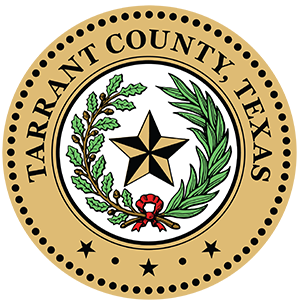The Many Benefits of Fiber
The Many Benefits of Fiber
Fiber is a grain, also known as roughage. It is the part of plant that remains intact as it passes through the stomach, small intestine, colon and on out of the body. It is not digested by enzymes in the gut like other nutrients. Because it is undigested, it provides the body with no calories. It absorbs water as it goes through the digestive system and helps with digestion. There are two major types of fiber -- soluble and insoluble, which can be found in all plant foods.
These two types of fiber have different characteristics. Soluble fiber dissolves in water. It is fermented by bacteria as it goes through the digestive tract. As soluble fiber absorbs water, it becomes gel-like. Insoluble fiber, on the other hand, does not dissolve in water. Its form does not change as it goes through the digestive tract. However, insoluble fiber can also be fermented by bacteria in the colon.
These two types of fiber are similar in that they both have major health benefits. Soluble fiber can help lower glucose levels and blood cholesterol levels. It may help in the prevention of colon cancer and help avoid hemorrhoids. Insoluble fiber promotes the movement of material through the digestive system so it increases bulk. This is of benefit to those who have problems with constipation or irregular bathroom habits.
A high fiber diet is recommended, but most people do not eat enough fiber. Some of the benefits of fiber include:
•Regulating bowel movements and helping maintain bowel health. It decreases your chance of constipation and may lower your risk of developing hemorrhoids and small pouches in your colon.
•Helping in achieving a healthy weight. High-fiber foods tend to be more filling so you're likely to eat less and stay full longer. Further, these foods tend to have fewer calories, for the same volume, than other foods.
•Lowering cholesterol levels. Soluble fiber may help lower total blood cholesterol levels by lowering "bad" cholesterol levels. It has also been shown that high-fiber foods may reduce blood pressure and inflammation.
•Helping prevent diseases of the colon. Since some fiber is fermented in the colon, researchers are looking at how this may play a role in preventing diseases of the colon, like some cancers.
•Helping control blood sugar level. Fiber, mainly soluble fiber, can slow the absorption of sugar and help improve blood sugar levels. A healthy diet including insoluble fiber may reduce the risk of developing type II diabetes.

Foods high in soluble fiber include:
- Oat, bran and barley
- Beans, Lentils and Peas
- Fruits and vegetables
- Nuts and seeds
Foods high in insoluble fiber include:
- Whole grain bread, cereals and pastas
- Beans and legumes
- Fruits
- Vegetables
Easy tips for getting fiber in the diet:
- Eat high-fiber cereal or oatmeal for breakfast
- Keep nuts around for snacks/munchies at work
- Eat an apple/pear a day
- Make a yogurt parfait with bran, berries and seed toppings once a week
- Snack on carrots sticks a few times a week
- Add kidney beans to your salads
- Make your sandwiches with whole wheat bread
- Try brown rice/whole wheat spaghetti
- Snack on fat-free popcorn
- Eat the skin on your baked potato
- Make smoothies using whole fruits
How much fiber do you need?
The National Institute of Medicine has the following recommendations for adults:
Men 50 years and younger |
38 grams |
Men over 50 |
30 grams |
Women 50 years and younger |
25 grams |
Women over 50 |
21 grams |

Fiber amounts in different foods
Fruits Serving size Total fiber (grams)*
Raspberries |
1 cup |
8.0 |
Pear |
with skin 1 medium |
5.5 |
Apple |
with skin 1 medium |
4.4 |
Banana |
1 medium |
3.1 |
Orange |
1 medium |
3.1 |
Strawberries (halves) |
1 cup |
3.0 |
Figs |
2 medium |
1.6 |
Raisins |
1 ounce (60 raisins) |
1.0 |
*Fiber content can vary among brands/Source: USDA National Nutrient Database for Standard Reference, Release 27

Grains, cereal and pasta Serving size Total fiber (grams)*
Spaghetti |
whole-wheat, cooked1 cup |
6.3 |
Barley |
pearled, cooked1 cup |
6.0 |
Bran flakes |
3/4 cup |
5.5 |
Oat bran muffin |
1 medium |
5.2 |
Oatmeal |
instant, cooked 1 cup |
4.0 |
Popcorn |
air-popped 3 cups |
3.6 |
Brown rice |
cooked 1 cup |
3.5 |
Bread |
rye 1 slice |
1.9 |
Bread |
whole-wheat 1 slice |
1.9 |
*Fiber content can vary among brands/Source: USDA National Nutrient Database for Standard Reference, Release 27

Legumes, nuts and seeds Serving size Total fiber (grams)*
Split peas |
boiled 1 cup |
16.3 |
Lentils |
Boiled 1 cup |
15.6 |
Black beans |
Boiled 1 cup |
15.0 |
Lima beans |
Boiled 1 cup |
13.2 |
Almonds |
1 ounce (23 nuts) |
3.5 |
Pistachio nuts |
1 ounce (49 nuts) |
2.9 |
Pecans |
1 ounce (19 halves) |
2.7 |
*Fiber content can vary among brands/Source: USDA National Nutrient Database for Standard Reference, Release 27

Vegetables Serving size Total fiber (grams)*
Artichoke |
Boiled 1 medium |
10.3 |
Green peas |
Boiled 1 cup |
8.8 |
Broccoli |
Boiled 1 cup |
5.1 |
Brussels sprouts |
Boiled 1 cup |
4.1 |
Sweet corn |
Boiled 1 cup |
3.6 |
Potato |
With skin, baked, small |
2.9 |
Tomato paste |
Canned ¼ cup |
2.7 |
Carrot |
Raw medium |
1.7 |
*Fiber content can vary among brands/Source: USDA National Nutrient Database for Standard Reference, Release 27


 TARRANT COUNTY, TX
TARRANT COUNTY, TX

 Chronic Disease Prevention
Chronic Disease Prevention
